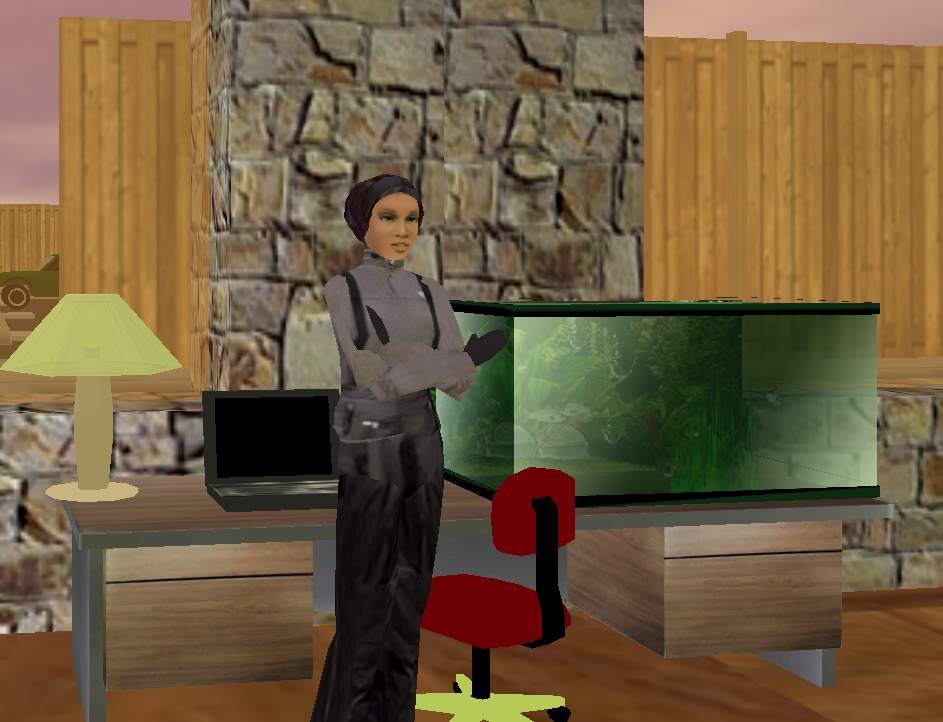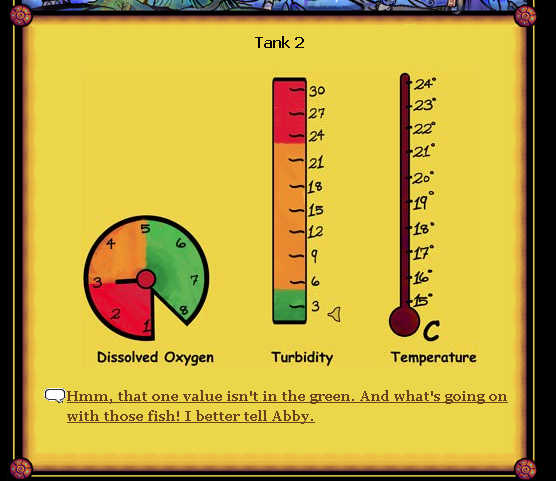
Quest Atlantis
Our final example of an exploratory environments is Quest Atlantis. We feature this example because we believe it demonstrates how an exploratory environment can provide learning experiences consistent with core theoretical ideas we first explored in Chapter 2 (authentic activities, contextualized learning), and because, if you are interested, the developers make available guest passes that would allow educators to gain a feel for what it is like to function within an online exploratory environment.
Quest Atlantis is an immersive online world for 9-16 year-olds the developers describe as a MUVE (multiuser virtual environment). Students, through the externalized persona of an avatar, act within this virtual world and the actions taken have consequences for what happens in the world. The designers describe the process as transformational play - actions taken transform the context (the virtual world) and the observation of changes in the context as a result of actions taken have potential to transform the player (learning). The desiners argue that typical classroom learning seems to indicate that using knowledge to take action is reserved for adults resulting in a disconnect between what students are asked to learn and their daily experiences. In contrast, situating learning in a context in which actions based on present understanding have consequences that contextualizes knowledge. (Barab, Gresalfi & Ingram-Goble, 2010)
Quest Atlantis offers a complex environment with quests exploring statistics, ecology, social studies and persuasive writing. What follows is a brief description of the preparatory challenge for learners choosing to explore ecology. Quest Atlantis Introductory Quest. The Taiga National Park is dealing with a serious ecological challenge. Fish in Cedar Creek are dying from unknown causes and students committing to this setting are hired as environmental scientists charged with assisting the overworked scientist, Abby (see image below), who is already on site attempting to determine what might be done about the problem. Evidently, Abby is both conducting field work and attempting to explore water quality issues in the laboratory, and as an introduction to the problems she is working on, she asks the new scientists to participate in laboratory studies that involve identifying possible sources of water quality problems and then intervening to evaluate possible solutions. An educator might describe the experiences that follow as an introduction to the scientific method through which students learn about the development of hypotheses and the implementation of treatments to test these hypotheses. If the novices move about the laboratory, they encounter some tanks in which the fish are lively and some in which they fish float listlessly near the surface. Meters are attached to the tanks and the scientists are encouraged to compare the readings (see the following figure), to identify a variable that differentiates the healthy from the sick tank (hypothesis), and then to test the hypothesis by applying a treatment that will influence the variable of interest (insert a bubbler in the tank with a low oxygen reading). This guided introduction to scientific inquiry might be described as scaffolding and is intended to prepare the young scientists for future quests in which they will be expected to collaborate and function more independently.

Avatar (Abby) Asks New Scientists to Investigate Problems With Some Laboratory Fish Tanks

Meters On Fish Tanks Provide Data
